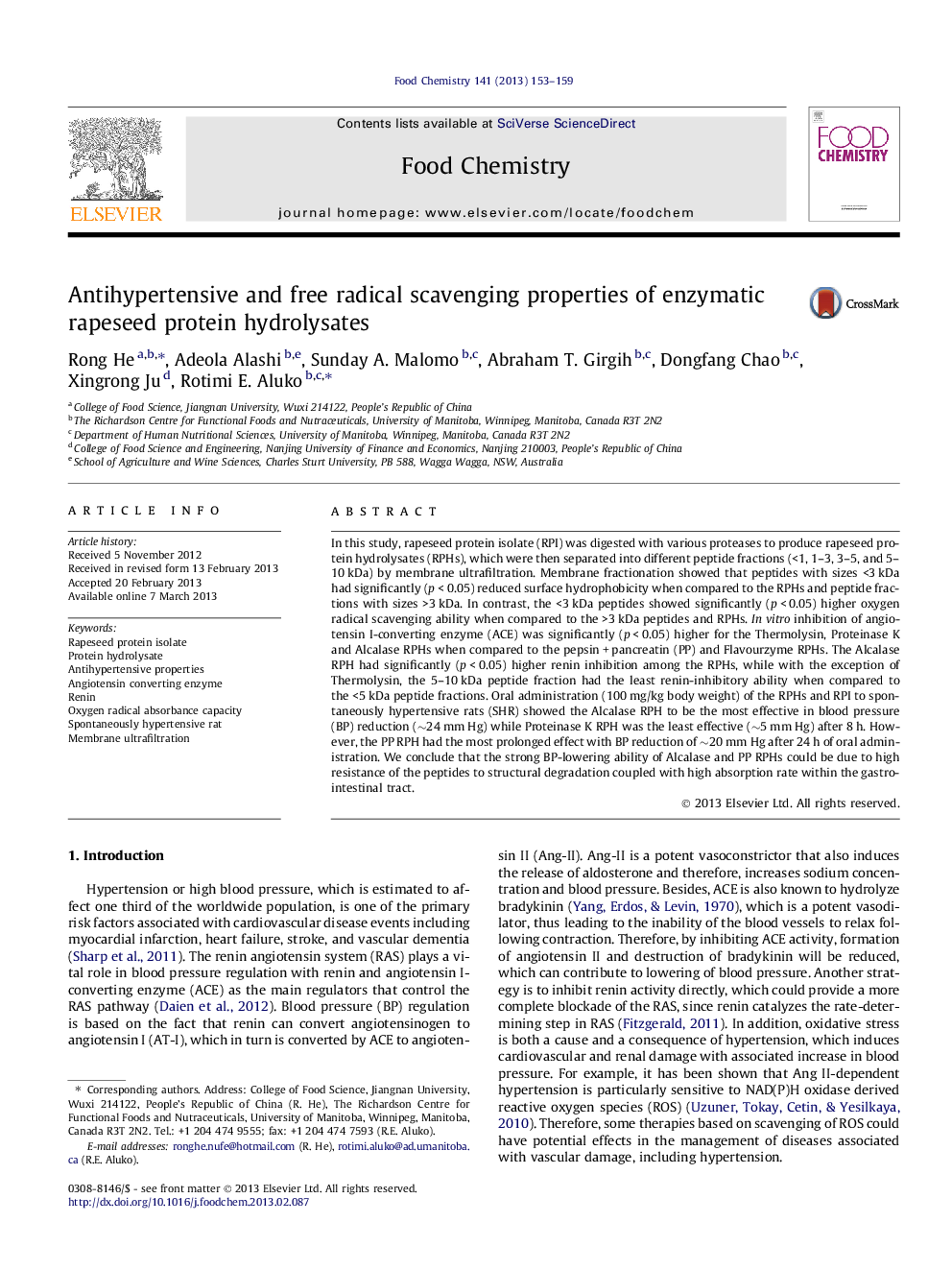| Article ID | Journal | Published Year | Pages | File Type |
|---|---|---|---|---|
| 10542298 | Food Chemistry | 2013 | 7 Pages |
Abstract
In this study, rapeseed protein isolate (RPI) was digested with various proteases to produce rapeseed protein hydrolysates (RPHs), which were then separated into different peptide fractions (<1, 1-3, 3-5, and 5-10 kDa) by membrane ultrafiltration. Membrane fractionation showed that peptides with sizes <3 kDa had significantly (p < 0.05) reduced surface hydrophobicity when compared to the RPHs and peptide fractions with sizes >3 kDa. In contrast, the <3 kDa peptides showed significantly (p < 0.05) higher oxygen radical scavenging ability when compared to the >3 kDa peptides and RPHs. In vitro inhibition of angiotensin I-converting enzyme (ACE) was significantly (p < 0.05) higher for the Thermolysin, Proteinase K and Alcalase RPHs when compared to the pepsin + pancreatin (PP) and Flavourzyme RPHs. The Alcalase RPH had significantly (p < 0.05) higher renin inhibition among the RPHs, while with the exception of Thermolysin, the 5-10 kDa peptide fraction had the least renin-inhibitory ability when compared to the <5 kDa peptide fractions. Oral administration (100 mg/kg body weight) of the RPHs and RPI to spontaneously hypertensive rats (SHR) showed the Alcalase RPH to be the most effective in blood pressure (BP) reduction (â¼24 mm Hg) while Proteinase K RPH was the least effective (â¼5 mm Hg) after 8 h. However, the PP RPH had the most prolonged effect with BP reduction of â¼20 mm Hg after 24 h of oral administration. We conclude that the strong BP-lowering ability of Alcalase and PP RPHs could be due to high resistance of the peptides to structural degradation coupled with high absorption rate within the gastrointestinal tract.
Keywords
Related Topics
Physical Sciences and Engineering
Chemistry
Analytical Chemistry
Authors
Rong He, Adeola Alashi, Sunday A. Malomo, Abraham T. Girgih, Dongfang Chao, Xingrong Ju, Rotimi E. Aluko,
